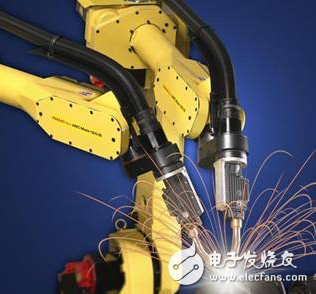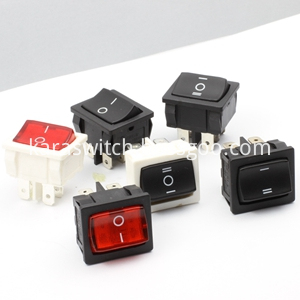With the publication of "Made in China 2025" in May last year, the "Internet + Manufacturing" intelligent production model behind the plan has brought a lot of new industrial opportunities, and robots are undoubtedly one of the most promising industries. The reporter recently found in Beijing, Guangdong, Liaoning, Anhui and other places that the current Chinese robot industry is rapidly developing with the transformation and upgrading of “smart manufacturingâ€, and the technology and application level are rapidly increasing, but the robot industry is also facing cost. Multiple bottlenecks such as high investment, detection technology and cost constraints, and lack of capital in some enterprises. In the production workshop of Anhui Efte Intelligent Equipment Co., Ltd. located in Wujiang Economic Development Zone, Wuhu City, Anhui Province, more than ten robotic arms of different shapes are operating in accordance with the procedures in the protective fence. Next to the production line, the staff can debug the robot arm with the control handle. Hefei robot enterprises have grown from less than 5 to nearly 30 in just one year, forming an industrial cluster; Fujian Xiamen has helped the development of robot enterprises with government financial funds; Guangdong Shenzhen implemented the “2014 robots at the end of 2014â€. The first batch of industry chain key link improvement plan, enterprise technology equipment and management improvement plan for the development of wearable equipment and smart equipment industry special funds, the government uses free grants to support enterprise projects. Mr. Zeng Hui, deputy general manager of Eft, told reporters that there are currently 15 models in the company. With the deepening of intelligent manufacturing, the application range of these robots has been “exclusive†from the earliest automotive industry. In 3C, home appliances, hardware, CNC machine tools, textiles, food packaging, entertainment and other industries, the company has also cooperated with more than 300 companies. “In 2014, China’s sales of industrial robots alone reached 57,000 units, accounting for a quarter of global sales. The consumer market and demand volume of Chinese robots are currently the largest in the world.†Secretary General of China Electronics Society, 2015 World Robotics Xu Xiaolan, secretary general of the conference, said. According to the statistics of the International Robot Association, global industrial robot sales increased by 27% in 2014, and China, which has a 54% increase in sales, has become the world's largest robot market. In addition, future service robots for families and individuals will surpass industrial robots and become China. An explosive growth in the robotics market. Xu Fang, dean of the Central Research Institute of Shenyang Xinsong Robot Automation Co., Ltd., said that "Made in China 2025" provides a very good historical opportunity in the "big country to strengthen" of China's robot industry. The integration of robots and Internet technology can give birth to new The manufacturing model has brought disruptive changes to the manufacturing industry. However, Xu Fang et al also proposed that the development of China's robot industry is still facing the constraints of three aspects. First, technology and cost are mutually constrained. At present, although China's robot industry has formed a whole industry chain covering hardware and software, some key components still rely on imports. The four key technologies are computing, vision, voice and drive. At present, only the voice field in China is not inferior to the international advanced level. There are still gaps in other areas. The low level of localization has kept the price of domestic service robots high, especially the procurement cost of the core component import platform has not decreased, and the final domestic product price will definitely not fall, resulting in the lack of competitiveness of products. "Some technologies are available, but the implementation cost is too high; some solutions are low cost, but the technology is not good." Chen Xiaoping, a robot industry expert and professor of the University of Science and Technology of China, said that the current problem of technology and cost constraints has become a limitation of the development of the robot industry. The biggest bottleneck. Second, the lack of industrial testing has restricted the mass production of the robot industry. "For example, if the robot used to pick up a cup, it would be successful if it could be picked up. This is a qualitative test." Chen Xiaoping said, "But to achieve mass production, in addition to qualitative testing, quantitative industrialization and standardized testing must be introduced. If a robot goes offline, it can let the machine automatically test its performance accurately, and mass production becomes possible. At present, the technology and standards of this test are still blank in China. Third, most of the capital operations of enterprises are not perfect. The team of Dong Erbao, associate professor of the Department of Precision Machinery and Precision Instruments of the School of Engineering Science, China University of Science and Technology, is working with Hefei Xiongying Automation Engineering Technology Co., Ltd. to carry out joint production, research and research transformation. At present, two robot products have been developed. "The main aspect of financial support is the enterprise, and the enterprise itself is still producing. The cash flow is limited. Without the intervention of capital, the human and material resources cannot keep up, and the speed of advancement is too slow!" Dong Erbao said helplessly. Qu Daokui, president of Shenyang Xinsong Robot Automation Co., Ltd. and chairman of the China Robot Industry Alliance, also pointed out that the current "short board" of the domestic robot industry as a whole in the capital chain operation is prominent. "Most of the enterprises have almost no financing ability in the capital market, and the methods and methods are not flexible enough. More depends on the integration of existing resources, and the borrowing from capital operation is very limited," he said. To this end, industry insiders and experts have suggested that we should first start with the national strategy and establish a social collaborative innovation platform that supports the development of the robot industry. “Innovation is the key to promoting the growth of China's robotics industry. We also need improved ecosystem cooperation to support the continued growth of the market,†said Ni Jianan, general manager of Intel Robot Innovation Center. Li Boji, assistant general manager of Guangzhou CNC Co., Ltd., also proposed that the existing robot industry research institutes, alliances, innovation platforms, etc. should be integrated as soon as possible to establish a social collaborative innovation platform to solve the common technical problems that the market needs most, including Talents, funds, and experimental resources are matched to serve the entire industry, making it less detours and saving time. The industry generally appealed to break through the soft technical standards. Li Becki and others said that the government and industry authorities should speed up the study of technical standards, quality standards, safety standards, and post-application standards to make the development of the robot industry more unified and healthier.
Kara offers a wide range of illuminated and non-illuminated Rocker Switches.Ranging from 1 to 6 poles,4VA to 30 amp,with many styles of colors and functions,especially the switches with High-Current used very widely in the welding machines. Certifications include UL, CSA, TUV, CE, and more. Kara Rocker Switches include the KR1-Series abd KR2- Series based on different size of the panel cut-out.
Rocker Switch,Waterproof Rocker Switch,Rocker Switch 3 Pin,Rocker Switch 4 Pin Ningbo Kara Electronic Co.,Ltd. , https://www.kara-switch.com
